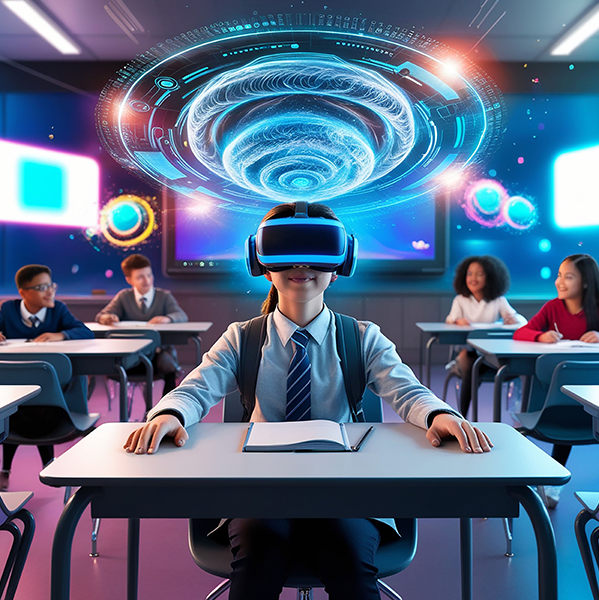
How Virtual Reality is Revolutionizing Education
Introduction
Virtual Reality (VR) is no longer a futuristic concept confined to science fiction. It has become a transformative tool across various industries, with education being one of the most promising fields. VR is revolutionizing the way students learn by creating immersive, interactive, and engaging experiences that go beyond traditional teaching methods. In this blog post, we will explore how VR is reshaping education and the benefits it brings to both students and educators.
1. Immersive Learning Experiences
VR enables students to explore new environments and scenarios in ways that are not possible in a traditional classroom. Whether it’s a virtual field trip to ancient Rome, a dive into the depths of the ocean, or an exploration of the human body, VR provides immersive learning experiences that make education more engaging and memorable. By experiencing subjects firsthand, students can better understand and retain information.
2. Enhanced Engagement and Motivation
One of the biggest challenges in education is keeping students engaged and motivated. VR addresses this issue by making learning interactive and fun. Students can participate in virtual labs, manipulate 3D objects, and engage in simulations that bring abstract concepts to life. This hands-on approach not only captures students' interest but also encourages active participation and collaboration.
3. Personalized Learning
VR can be tailored to meet the individual needs of each student. Adaptive learning platforms using VR can adjust the difficulty and pace of lessons based on the student's progress and understanding. This personalized approach ensures that students receive the appropriate level of challenge and support, helping them to achieve their full potential. Additionally, VR can accommodate different learning styles, making education more inclusive.
4. Safe and Controlled Environments
VR provides a safe and controlled environment for students to experiment and learn. In subjects like chemistry or biology, where real-life experiments can be hazardous, VR simulations allow students to conduct experiments without any risk. Similarly, medical students can practice surgeries and procedures in a virtual setting, gaining valuable hands-on experience without the potential consequences of real-world mistakes.
5. Bridging the Gap in Distance Learning
The COVID-19 pandemic highlighted the limitations of traditional distance learning methods. VR has the potential to bridge this gap by creating virtual classrooms where students and teachers can interact as if they were physically present. This fosters a sense of community and collaboration, which is often missing in remote learning. VR can also provide access to educational resources and experiences that might otherwise be unavailable to students in remote or underserved areas.
6. Professional Development for Educators
VR is not only beneficial for students but also for educators. Teachers can use VR for professional development, gaining new skills and techniques for the classroom. Virtual training programs can simulate real-life teaching scenarios, allowing educators to practice classroom management, lesson delivery, and student engagement strategies. This continuous professional development helps teachers stay updated with the latest educational trends and technologies.
7. Overcoming Physical Limitations
For students with disabilities or physical limitations, VR offers an accessible way to experience and participate in learning activities. Virtual environments can be designed to accommodate various needs, ensuring that all students